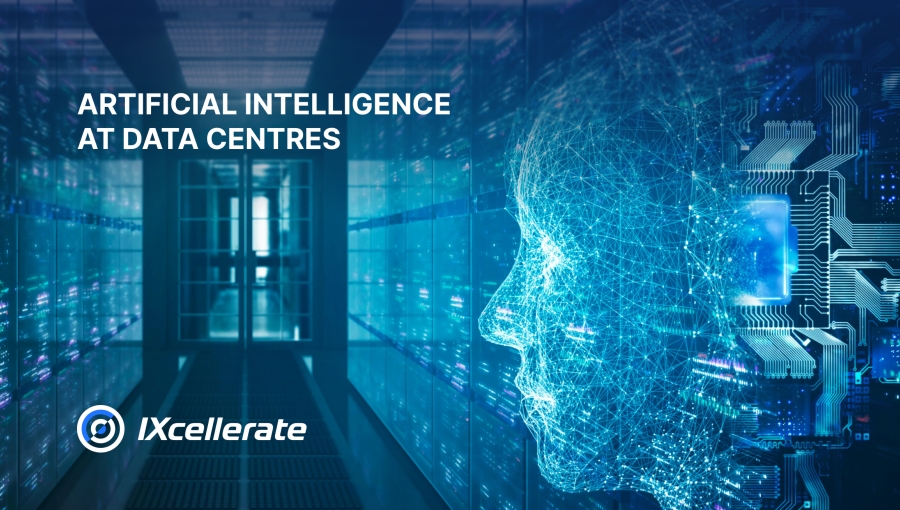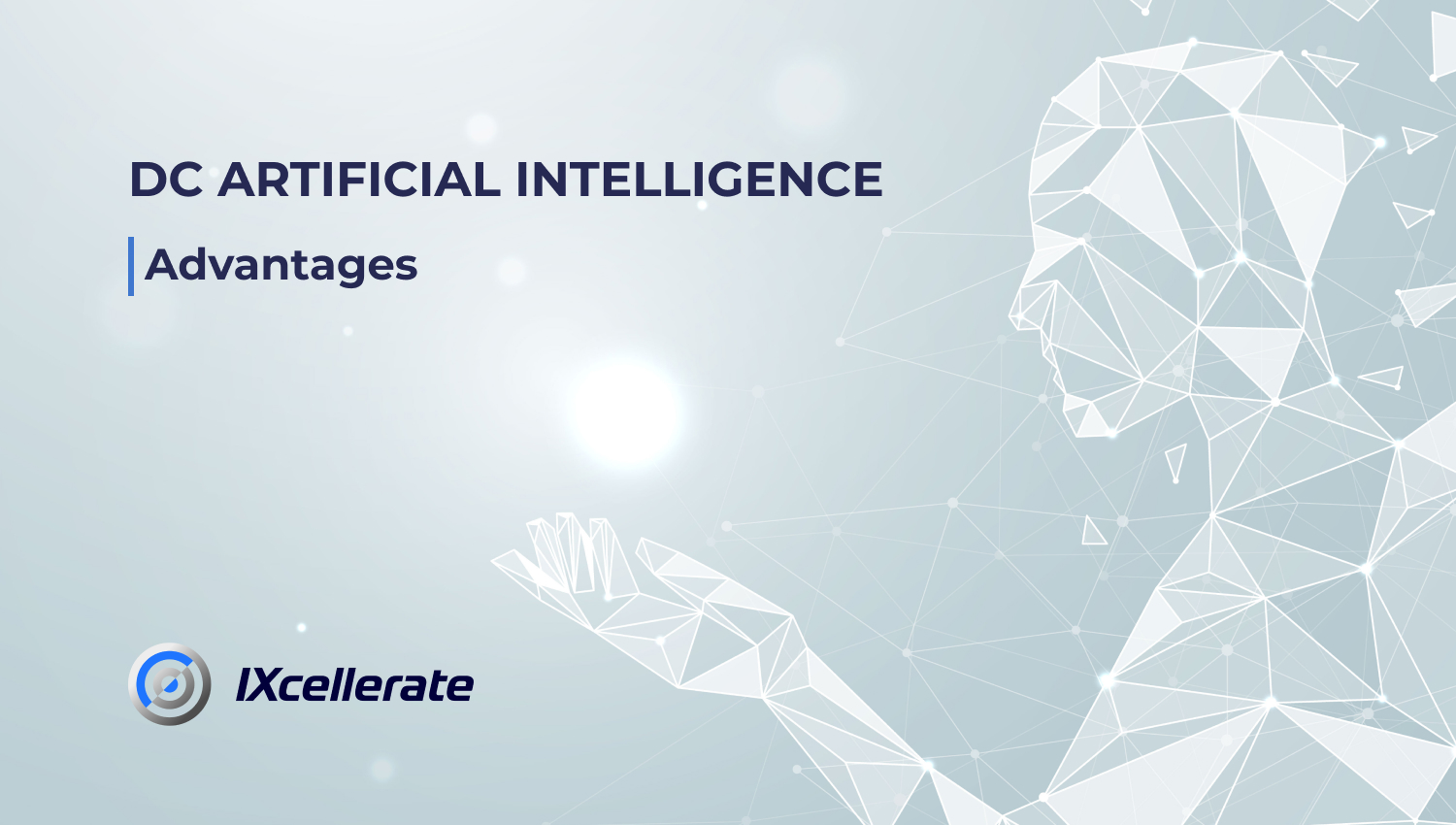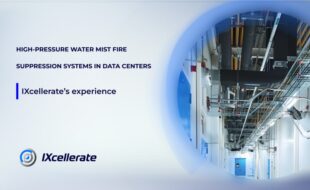
In 2022, artificial intelligence (AI) moved from a niche segment to the mainstream, triggering a dramatic increase in demand for DC services both from cloud providers and from major companies, which are increasingly widely using adaptive systems based on AI and machine learning.
According to the figures from IBM, 35% of businesses have already adopted AI technology in one way or another, and 42% plan to implement it in the near future. Precedence Research, estimates the size of the global artificial intelligence market at $454.12 bln (at year-end 2022) and predicts that by 2032 it will reach approximately $2,575.16 bln, while the cumulative average growth rate (CAGR) will be 19% between 2023 and 2032.
Data centres play a great role in the process as they provide the computing facilities necessary for training and implementing AI models.
The new digital reality imposes exacting requirements on DCs. Their operation becomes increasingly more challenging in the fast-changing technological landscape: providers need to ensure smooth running of the data centre and its safety and security, effectively manage resources and save power.

«Densely packed configurations are essential for high-performance computing involving Artificial Intelligence. Data centres must be designed in such a way so as to cope with high working loads while remaining energy-efficient and competitive».
Sergey Vyshemirsky, IXcellerate CTO
What are the benefits of AI implementation at a data centre?
Machine learning algorithms and predictive analytics to process huge amounts of data enable DC operators to identify patterns and make informed decisions to optimize resource allocation, manage the work load and plan capacity. Artificial intelligence at a data centre makes it possible to control and reduce possible downtime, optimize the load of the cooling systems and improve fault tolerance, safety and security.
The leading global IT giant Microsoft uses artificial intelligence to analyse data and generate security alerts during the construction and operation of DCs. Google uses AI technology to optimize its cooling systems and predict wind generator capacity. The adoption of AI technology has already enabled the company to reduce its power usage effectiveness (PUE) by 15%. Using AI and machine learning algorithms, the engineers of a social network develop simulations of challenges in order to optimize the power usage, cooling and ventilation of their servers. SBER has accumulated a wealth of data and used it to train artificial intelligence models, which adapt themselves to internal changes and enable fast checks for secure data.
Artificial intelligence at IXcellerate
IXcellerate team will further explore the possibilities of AI to minimize the human factor in the DC operations, and specifically to forecast potential outages as a result of the weather and/or events in the municipal utilities. To accomplish this task we need to build algorithms that will compare a number of simultaneous events in the monitoring system and create predictive models “in 10 minutes”, “in an hour”, “in 24 hours”. Such project will help our duty shifts to prioritize their responses and rank the incoming signals with due regard to downtime risks.
In the long term, we also consider digital twins of the DC to operate as simulators. They are called upon to help assess and improve the competence of employees and train various functions and contractors to respond to standard and non-standard events/requests.
The benefits of AI at a data centre are not limited to any specific area. Nearly every one of the business processes involved in the design, operation and management of DCs can be improved using AI technology.
Artificial intelligence at a DC: benefits
Predicted maintenance
AI algorithms can effectively analyse data from sensors and monitoring systems to identify possible equipment failures and take pre-emptive trouble-shooting measures. Preventive maintenance improves the reliability of DC infrastructure and minimizes the risks of downtime and/or malfunctions.
Energy saving
AI makes it possible to identify energy losses, monitor server loads and improve the data centre’s energy efficiency (PUE) by optimizing the cooling systems. It is the other way round: a lack of such solutions can cause excess power usage, which means higher maintenance costs and an adverse environmental impact.

Better security
Unauthorized access, network intrusions and data breaches are core risks for data centres. While analysing the structure of network traffic, artificial intelligence can identify security threats, potential breaches and cyberattacks. Also, it provides smart mechanisms for access and authentication control to improve the physical security of DCs.
Optimal resource allocation and scalability support
Data centres can increase the infrastructure capacity through effective workload distribution. Artificial intelligence analyses the computing facilities and network throughput and adjusts to it, optimizing resource allocation. Performance maximization in response to any change in work load helps the data centre adapt quickly to the changing requirements and stay flexible.
Human factor
DC operators normally rely on manual processes in carrying out tasks such as resource allocation, capacity planning and maintenance. The human factor increases the risk of errors and can push up maintenance costs. AI-assisted automation of DCs helps reduce the share of manual labour, improve operating performance and free up resources to address strategic tasks.
Storage and processing resources
In reviewing the historical data and structure of work load, AI algorithms can forecast the demand for DC operators, infrastructure requirements and the necessary capacity. This helps prevent bottlenecks in productivity and non-optimal resource allocation.
Examples of AI-based solutions for data centres
Over time, data arrays on loads and incidents, parameters of the external environment, and regulatory maintenance accumulate in the information contour of the data center. This data serves as the basis for preparing basic AI algorithms and building predictive models or systems for intelligent analysis. AI-based systems can be used for extensive data center automation as well as for autonomously performing various tasks. The list of primary AI-based tools includes:
Predictive analytics tools
In forecasting the demand pattern, power usage and equipment failures, machine learning algorithms help the DC management allocate resources to the best advantage.
Smart cooling systems
AI-based software can optimize DC cooling and power usage management by analysing ambient factors such as temperature and humidity. These solutions make it possible to adjust the cooling parameters and reduce power usage, while maintaining the most suitable temperature in the server room.
Autonomous monitoring and maintenance systems
AI-based monitoring and maintenance systems monitor the DC infrastructure and can identify anomalies, forecast failures and initiate preventive maintenance measures.
Smart workload management platforms
AI-based load-balancing algorithms use historical performance data for dynamic resource allocation and performance maximization. AI makes it possible to eliminate various risk factors faster than conventional approaches.
Automated plant and resource configuration control
AI-based software solutions automate the DC facilities and resource configuration. These systems can build virtual machines, designate a repository and configure the network parameters based on predetermined rules and policies. This saves time and reduces the likelihood of errors.
Security and threat detection systems
Machine learning algorithms are used for fast identification and control of security issues in real time. These systems provide notification of potential cyberthreats, improving DC safety and security across the board.
How to develop an AI-assisted software solution for DC?
Sequence of steps:
- Identification of AI-based solution purposes and applications (optimization of resource allocation, power usage, security improvements etc.).
- Collection and organization of operational data, sensor readings and other historical data. Review of data for compatibility with AI algorithms.
- Selection of AI algorithms and development of models to accomplish the stated purposes.
- Model training and testing. Development of test tools to assure the accuracy and effectiveness of the model in accordance with the KPIs specified.
- Implementation of the solutions.
- Support and updating to stay on top of the DC’s regularly changing operating needs.
How much does it cost to implement AI at data centres?
The dollar cost of building AI solutions for a DC can range from five to six figures. There are a number of factors that affect the total development budget; these include:
- the complexity of the solution,
- the availability, accessibility and quality of data,
- the track record of the development team,
- the need for integration with existing systems,
- maintenance requirements,
- conformity with regulatory requirements,
- the time needed for development and implementation etc.
AI prospects in the DC industry
In his world-famous bestseller “AI Superpowers”, Kai-Fu Lee, former president of Google China, opines that artificial intelligence is mankind’s ultimate step to self-understanding. Artificial intelligence defeats humans at chess and many other games, drives cars and unravels complex scientific enigmas previously beyond the human ken, thus encouraging the man to evolve and search for a perfect symbiosis. Something along those lines is taking place in the DC industry.
According to a survey by IDC, more than 57% of DC operators trust AI-based solutions. According to Gartner, by 2025 elements of AI and machine learning will have been implemented at half of all data centres, which will increase their operating performance by 30%, reduce maintenance costs and help achieve higher KPIs. This also means that about a third of DCs that do not use AI will become economically and technically unviable in the next few years.

«The futures of artificial intelligence and data centres are entwined: they are in a symbiotic relationship. AI needs high-capacity storage facilities and incentivizes the DC industry to search for new effective solutions, as well as offering its own ‘services’ to achieve the objective».
Sergey Vyshemirsky, IXcellerate CTO
This country is no exception, but a leap forward in this area will not be possible unless we clear major obstacles to AI implementation in various sectors such as: a lack of skilled professionals and infrastructure. This requires assigning a top priority at the national level, which will make it possible to strengthen the scientific base of AI, bring in talent and build the necessary statutory framework.



